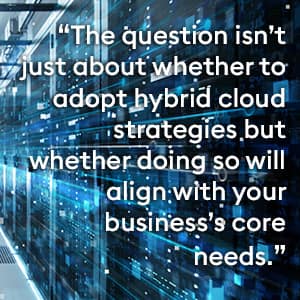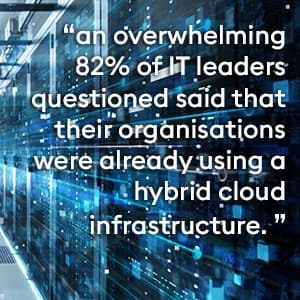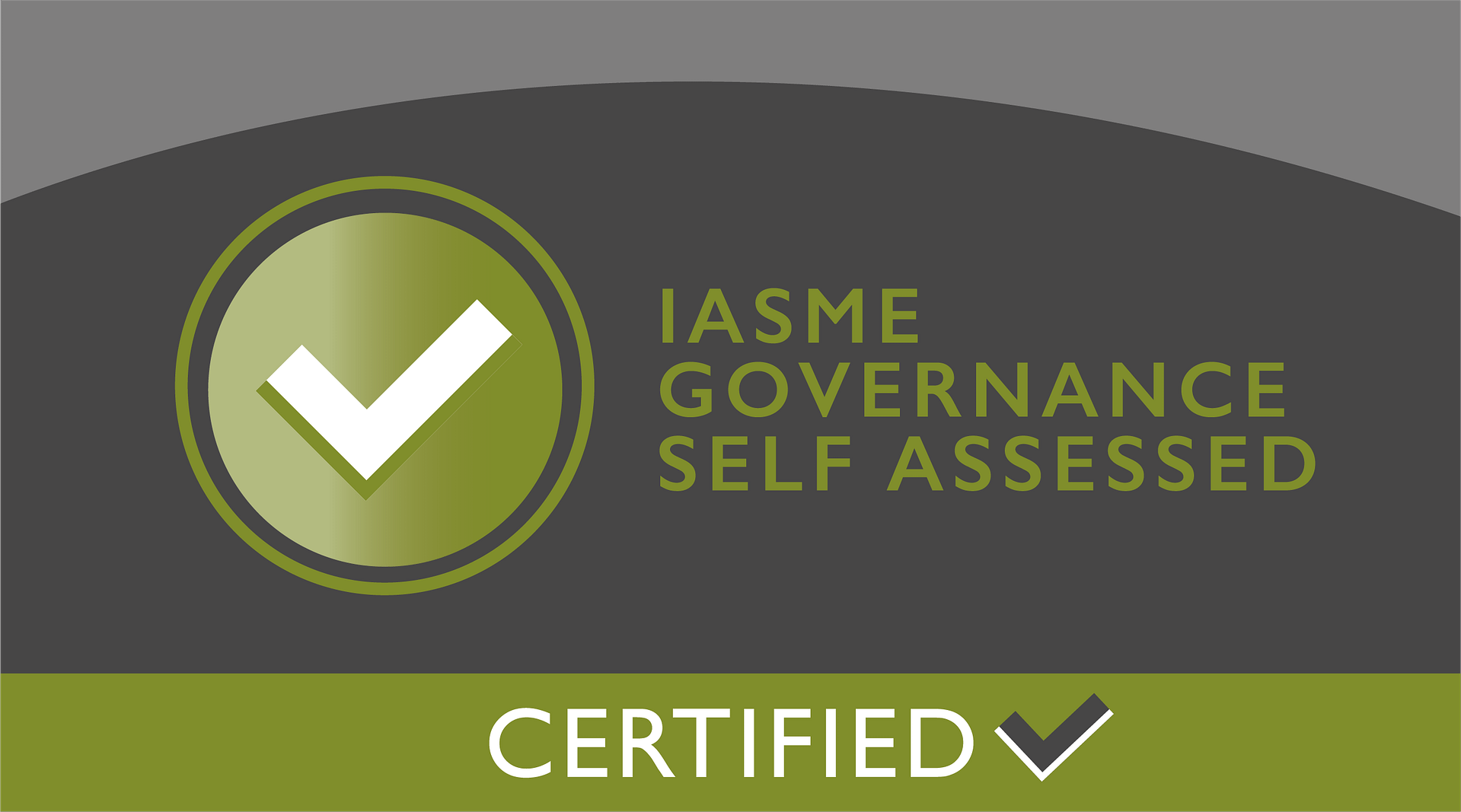The Rise of Hybrid Cloud Solutions. The Benefits, Pitfalls, and Priorities for Your Business

This article will walk you through the benefits and challenges of each, alongside a quick and simple answer to the question ‘What on earth is hybrid cloud anyway?’.
What is Hybrid Cloud and Why is it Growing in Popularity?
Cloud computing has been around for as long as business broadband has been able to service its wavelength-hungry needs, but hybrid cloud is something quite different.
Managed cloud services fall into two clear categories, public and private. Public clouds are servers located in data centres that are available for use by any organisation, with server and storage capacity shared between businesses based on the way the data centre wishes to optimise the use of its resources. Private clouds on the other hand are servers and storage capacity that is dedicated to a single organisation client. Now these servers may be located in remote data centres, but they could also be sitting in the organisation’s own offices.
So, which is better?
Benefits of Private Cloud
- Tighter Control Over Security. Private clouds allow for more bespoke security and data management than shared cloud services.
- Customised Environments. The operational and performance requirements of an organisation can be prioritised in the bespoke way in which the environment is set up.
- More Predictable Performance. Without the unpredictable nature of shared-user use, private clouds offer greater reliability.
Benefits of Public Cloud
- More Cost-Effective. Improved efficiencies of multi-tenanted cloud services can lead to lower costs and greater flexibility in demand-dependent use.
- Scalability. Public clouds allow companies to scale their use up or down as needed, enabling them to run more agile businesses that are better positioned to rapidly respond to changes in market conditions.
- Diversity of Ecosystem. Access to a wider range of services, tools and applications without the need for customisation.

However, navigating this landscape comes with its unique set of challenges and opportunities. The question isn’t just about whether to adopt a hybrid cloud solution but whether doing so will align with your business’s core needs.
The Benefits of Hybrid Cloud Managed Services
Through leveraging the strengths of both public and private cloud environments businesses can benefit from the hybrid model in the following ways:
- Data Sensitivity Segmentation: As already mentioned, an organisation’s data can be split between sensitive, to reside in the private cloud’s more secure environment, and less sensitive, to be on the public cloud to take advantage of lower costs and greater flexibility.
- Innovation and Speed to Market: With your business-critical data safely tucked away in your private cloud, a public cloud could be used for the development and testing of innovations and new business strategies, allowing you to more comfortably ‘move fast and break things’ as Mr Zuckerberg would say.
- Cost Optimisation: Flexibility, scalability and the interplay between public and private cloud in access to particular data groups can lead a skilled organisation (or their IT strategists) to achieve significant cost savings – money which could be reinvested into the business growth programme.
- Business Continuity: A hybrid cloud solution, due to the diversified nature of data access, storage and security, provides a more robust solution for backup and disaster recovery, allowing businesses to carry on working, even in the face of a major digital disaster.
The Challenges of a Hybrid Cloud Model

- Technical Skill Requirement: Integrating different cloud environments so they work seamlessly together – with data, applications and work processes moving and operating effectively across the different servers can be complex in terms of compatibility, security and management practices. This requires a level of technical skill that some organisations do not have internally.
- Security Risks: While the ability to segment data to ensure the highest security levels (of private clouds) is applied where most appropriate, the act of splitting this data across multiple platforms offers its own security challenges. It is, therefore, more important than ever for robust best-practice data protection strategies to be determined, implemented and maintained.
- Cost Management: It is true that a hybrid cloud solution can lead to significant cost savings, however, this does rely on skilled cost management being in place to consider all areas where multiple platform use could lead to unforeseen expenses.
Six Steps to Transitioning to Hybrid Cloud
If you are considering adopting a hybrid cloud strategy, here is a typical six-step process to follow:
- Assessment: Evaluate your existing IT infrastructure, applications, and data to determine what can or should move to the cloud, which type of cloud-managed service is needed, and what should remain on-premises.
- Planning: Develop a hybrid cloud strategy, including determining which public and private cloud providers and technologies would be right for your organisation’s needs.
- Design: Structure the hybrid environment, ensuring all necessary compatibility, connectivity, and security between on-premises and cloud components.
- Implementation: Migrate applications and data to the cloud according to the hybrid cloud strategy you created earlier, often starting with less critical systems.
- Security and Compliance: Define and implement robust security measures to ensure compliance with all company, best practices and regulatory expectations.
- Optimisation and Management: Monitor, manage, and fine-tune your cloud resources and costs, adjusting as business needs change.
What Will You Do Next?

We hope you’ve found this useful, but if you’ve further questions about public, private or hybrid cloud infrastructures and strategies, feel free to reach out – we’d be more than happy to help you determine the best course of action for your organisation.
For more information on a Hybrid Cloud Solution contact Assembly Managed Services.
Telephone: +44 (0)20 3795 6880
Have you enjoyed this blog? If so, why not share it on your preferred social media platform?






